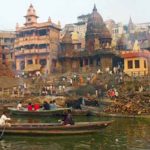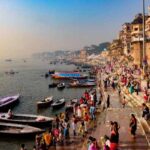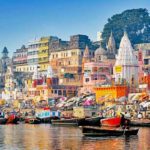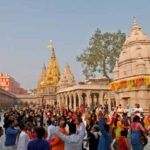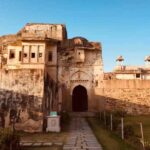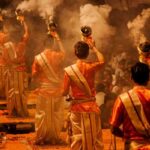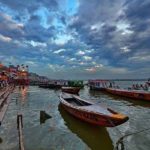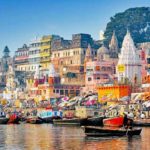Ramnagar Fort Varanasi, situated in Varanasi, India, is a historic monument that stands as a testament to the city’s rich cultural and architectural heritage. Located on the eastern bank of the Ganges River, the fort is an embodiment of the regal elegance of a bygone era.
Built in the 18th century by Maharaja Balwant Singh, the fort serves as the ancestral home of the Kashi Naresh, the hereditary ruler of Varanasi. Its distinctive architectural style blends elements of Mughal and Rajput design, creating a mesmerizing fusion of artistry. The sandstone walls, intricate carvings, and ornate balconies reflect the grandeur of that era Ramnagar Fort Varanasi.
The fort complex is comprised of various structures, including the Durga Temple, museum, and the King’s residential quarters. The Durga Temple holds significant religious importance and is visited by devotees throughout the year. The museum houses an eclectic collection of vintage carriages, royal costumes, weaponry, and artifacts, offering visitors a glimpse into the royal lifestyle of the past.
The Ramnagar Fort is also renowned for its annual Ramnagar Ramlila, a theatrical enactment of the Hindu epic Ramayana, which unfolds over the course of a month and draws crowds from far and wide. The fort comes alive during this festival, with its courtyards and passages serving as stages for the performances Varanasi Tour Packages.
While the fort has aged gracefully, some sections are in need of restoration and preservation efforts. However, its historical significance and the cultural narratives it embodies continue to attract tourists and history enthusiasts from around the world, allowing them to immerse themselves in the grandeur of India’s royal past while soaking in the panoramic views of the Ganges River and the city of Varanasi beyond Udaipur Attractions.
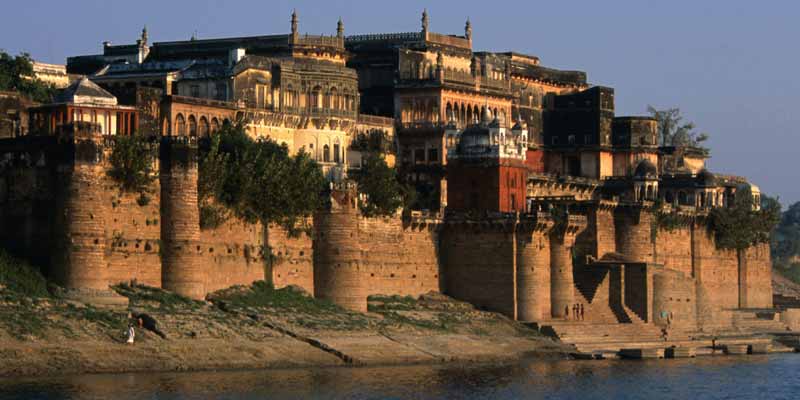
History of Ramnagar Fort
The history of Ramnagar Fort in Varanasi dates back to the 18th century. It was built by Maharaja Balwant Singh, who was the ruler of the Kashi Naresh dynasty. The fort was constructed as the official residence of the royal family and served as the administrative headquarters for the kingdom of Kashi (Varanasi).
Maharaja Balwant Singh, who ruled from 1739 to 1770, commissioned the construction of the fort in 1750. The fort was strategically positioned on the eastern bank of the Ganges River, offering a commanding view of the river and the surrounding area. Its location also facilitated the control and management of trade and other activities along the river Ramnagar Fort Varanasi.
The architecture of Ramnagar Fort showcases a blend of Mughal and Rajput styles, characterized by intricate carvings, ornate balconies, and impressive sandstone walls. The fort’s design is a reflection of the artistic and architectural influences prevalent during that period.
Ramnagar Fort has served as the residence of the Kashi Naresh, the hereditary ruler of Varanasi, since its inception. The Kashi Naresh continued to live in the fort even after India gained independence and the princely states were integrated into the country. The fort’s significance goes beyond being a residence; it also houses various artifacts, treasures, and historical items associated with the Kashi Naresh dynasty.
One of the most famous aspects of Ramnagar Fort’s history is the Ramnagar Ramlila, an annual event that reenacts episodes from the Hindu epic Ramayana. This month-long festival draws visitors and tourists from all over India, transforming the fort into a vibrant center of cultural and religious festivities.
Over time, the fort has faced the challenges of preservation and maintenance. Some sections of the fort have deteriorated, and efforts have been made to restore and conserve its historical and architectural value.
Ramnagar Fort Varanasi stands as a living testament to Varanasi’s royal heritage, offering insights into the cultural, architectural, and historical richness of the region. It continues to attract visitors, historians, and enthusiasts, allowing them to step back in time and appreciate the grandeur of a bygone era.
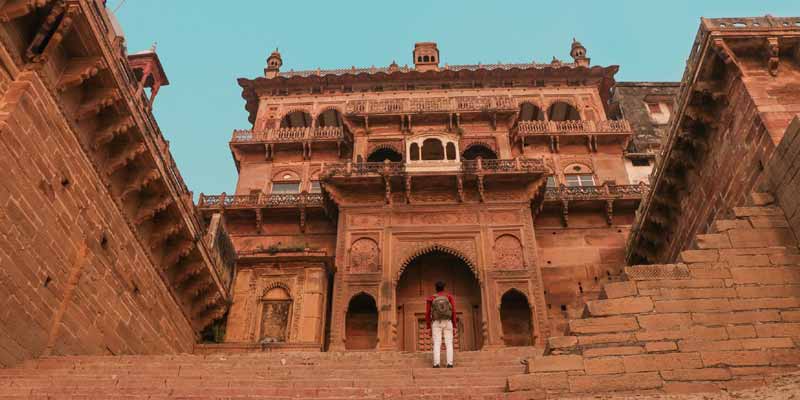
Ramnagar Fort Museum
The Ramnagar Fort Museum is an integral part of the Ramnagar Fort complex located in Varanasi, India. It is a repository of historical artifacts, royal memorabilia, and cultural treasures that provide insights into the rich heritage and lifestyle of the Kashi Naresh dynasty and the region of Varanasi. The museum is a significant attraction for tourists, history enthusiasts, and those interested in exploring the history of the area Varanasi Day Tours.
The museum is housed within the sprawling Ramnagar Fort Varanasi, which itself is an architectural marvel. It showcases a diverse collection of items, offering visitors a glimpse into the opulent past of the royal family and the city. The museum’s exhibits are thoughtfully curated to reflect the cultural, religious, and social aspects of Varanasi’s history.
Some of the notable features and exhibits of the Ramnagar Fort Museum include:
- Vintage Carriage Collection: The museum boasts an impressive assortment of vintage carriages and coaches that were once used by the Kashi Naresh and his court. These ornate carriages provide a window into the regal transportation methods of the past.
- Royal Costumes and Attire: The museum showcases a range of traditional royal costumes, jewelry, and accessories that were worn by the rulers and nobility of Varanasi. These garments offer insights into the intricate fashion of the time.
- Armory and Weapons: A display of weaponry and arms used by the Kashi Naresh dynasty, including swords, shields, and firearms, provides a glimpse into the military history of the region.
- Artifacts and Objects of Interest: The museum houses an array of artifacts, including paintings, manuscripts, coins, and decorative items, which offer a comprehensive view of the cultural and historical evolution of Varanasi.
- Photographs and Portraits: The collection features photographs and portraits of the Kashi Naresh rulers, showcasing their lineage and contributions to the region.
Visiting the Ramnagar Fort Museum allows visitors to immerse themselves in the legacy of Varanasi and gain a deeper appreciation for its royal past. The museum’s carefully preserved exhibits contribute to preserving the historical identity of the region and provide an educational and engaging experience for people of all ages Ramnagar Fort Varanasi.
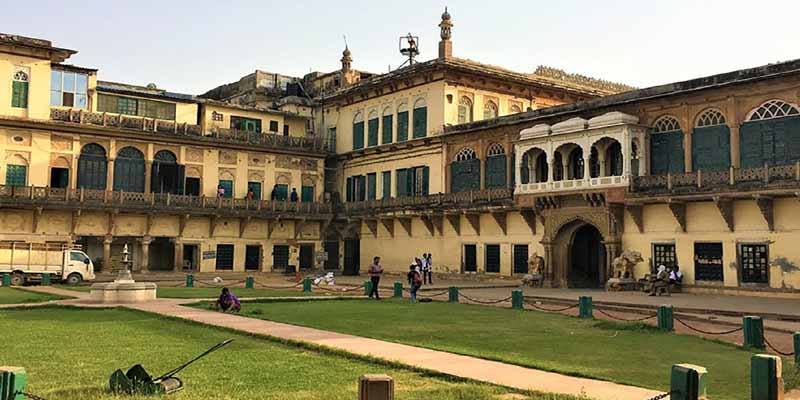
Best time to visit the Ramnagar Fort and museum, Varanasi
The best time to visit the fort is between March and September. There are various festivals during this season, and you can enjoy them. The weather is also suitable for the place. You can be a part of all the festivals and processions taking place.
How to reach the Ramnagar Fort, Varanasi
Ramnagar Fort is located in Ram Nagar, Kila road crossing, Varanasi. It is the opposite of Tulsi Ghat. You can use a taxi, cab, or local transport to the palace. Varanasi is well-connected by all means of transport from almost every city in India. When you reach the city, you can hire a cab from top car rental companies in Varanasi or a rickshaw to take you around Ramnagar Fort Varanasi.
By Road: Tengra Mod bus stop is the nearest stop to Ramnagar Fort. It is approximately 3 km from the fort. You can use the local bus to reach there.
By Rail: Varanasi Junction is 9.6 km away from the fort. You can hire an auto-rickshaw or taxi to reach the place.
By Air: The nearest airport Lal Bahadur Shastri International Airport is 33 km from the fort. You can book a cab or taxi to reach the fort from there.

